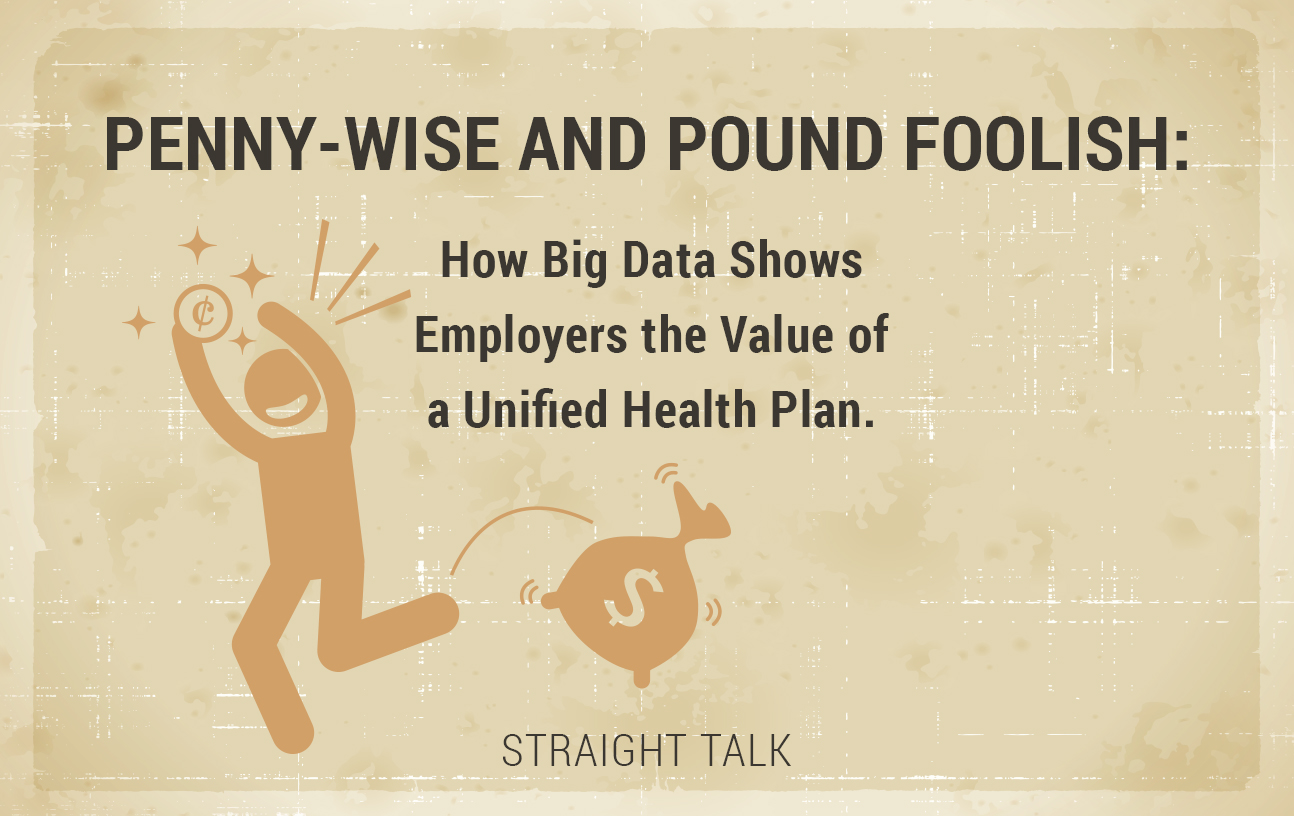About 90% of us have health insurance from birth to age 64 because we either have a job, retired from a job or are related to someone who has or retired from a job.
As we’ve discussed in these pages before, employer-sponsored health insurance still covers, even in this era of expanded government programs, more than 170 million Americans. The generosity of employers in providing these benefits is manifest — around $750 billion a year in premiums and healthcare delivered. And, their investment has grown by around 50% in the past decade.
Doing More with Data
At Blue Cross and Blue Shield of Louisiana, we work very hard to make sure our 17,000+ employer groups can manage and create new opportunities to help their employees live healthier lives. It fits our mission, “to improve the health and lives of Louisianians,” to a T. To do this, we let our groups have the best information we can offer.
In pursuit of better care for our members, we have discovered some strong facts that may not be obvious to most people we serve. That’s the beauty of Big Data — if you have the courage to get outside the box a bit, you can really discover new ways to add value that go beyond what you see in history.
A great example of this is our predictive modeling efforts. Using information we know about our more than one million members’ healthcare use, we have built a program that can predict who is destined for an inpatient hospital stay, an emergency room visit or even readmission. Our models are more accurate than commercial models! This higher accuracy from our in-house model means we are a clear leader within the health insurance space.
And that means if we know who may need additional care, we can help them sooner by connecting them with a health coach from our clinical team or recommending tools or resources to help them. It’s yet another way, with a good stream of real-time health data, we can help folks avoid serious health problems and get ahead of medical costs before they happen! That’s what I call “adding value.”
In order to keep these models accurate and maximize their value to members and our employer groups, it helps if there is no disruption in employee health records. Unfortunately, some recent trends in the employer health insurance market that appear to save money for companies are actually costing them lots more money. A great example of this is what we call “carved-out pharmacy benefits.”
Pharmacy Carve Outs: A Bitter Pill?
When big companies are looking for health insurance, and carriers and Third Party Administrators are bidding for their business, it has become common practice to bid for the drugs portion of coverage separately. Indeed, an entire industry of “drug providers” has sprung up to try to carve that part of the business out, away from the health insurance company.
Now that this practice of separating drug coverage has been in place for a few years, we’ve been able to focus our analytical lens on it and see how it’s working out for the companies who use us for medical, but someone else for pharmacy.
Straight Talk is, they are not doing so well. I’m about to get a bit wonky and use some math, so I apologize in advance for that!
In the short term, some of our companies are saving money on the drug portion of their health plan by moving it to another vendor. But, we’ve found that over time, breaking off this important part of real-time health information has caused medical costs in these same groups to spike.
In other words, when an average large group has someone else managing their members’ pharmacy benefits, we’ve observed the group’s MEDICAL costs go up an average of 3.6%. Since medical costs in our average large group are 57% of their total cost, this means a total trend increase of 2% in their health plan. That’s 2% of the group’s TOTAL healthcare costs.
To make matters worse, this “carving out” behavior increases hospital admissions. When groups remove this important data from the healthcare record to another vendor and break up their health insurance, hospital admissions go up 5% on average, and ER visits go up 3%.
Pairing Pharmacy with Medical Brings Greater Benefits
It seems highly unlikely that groups are considering this cost increase when they are placing their pharmacy business, but it’s my job to give our clients, who are dear to us, all the information we have at our disposal, and we can certainly help them compute this any time they are shopping. This is hard data.
In other words, placing pharmacy benefits outside their medical plan is making their groups LESS healthy on average and driving more costs. Measurably so.
Since most companies spend more on medical costs than they do on drug costs (typically 55-60% medical and 20-25% on drugs), it would not take long for these increases in medical costs and decreases in employee health to swallow up any savings they might have enjoyed on drug costs and turn the entire exercise negative. Removing a critical component of the health plan from the clinical, medical information chain drives up costs, on average, a LOT. And, it disrupts our ability to help these groups’ members avoid hospitals stays, ER visits and poor health.
During a doctor’s appointment, your doctor first asks if you are taking any medicines and what those drugs are. Your doctor needs this information to get a clear picture of what’s going on with your health and how he can help you feel better.
If your doctor doesn’t have the answer to this question, he’s missing a big piece of your overall health situation. The same is true if pharmacy benefits are missing from the information used to manage care for employees.
In this day and age, real-time data exchange isn’t just a concept, it’s a strong and fast reality, and it makes sense to maximize the information available for healthcare providers to react to and act upon by keeping it all flowing from one source.
Breaking up the health insurance product doesn’t just drive more costs per member, it also breaks the chain of data we are using in our predictive models, the ones designed to help intervene for members who are on the verge of an acute episode that will send them into hospitals or emergency rooms.
Every business owner wants maximum effectiveness and minimal expense, and Blue Cross’ predictive models are coming into their own as tools to accomplish that. It’s critical that ALL the facts are considered when businesses buy their health insurance.
As an employee of a company with health insurance that also looks out for my pharmacy coverage, I am comforted that someone is watching out for my good health, and will let me know potentially BEFORE bad things happen. I draw strength from that.
You should, too!





Leave a Reply